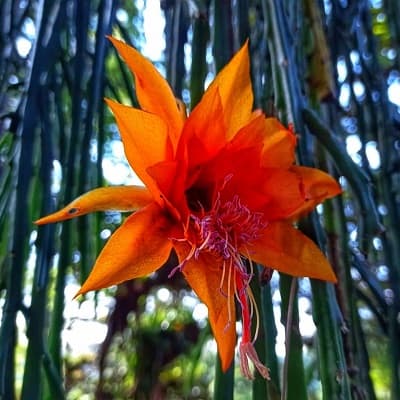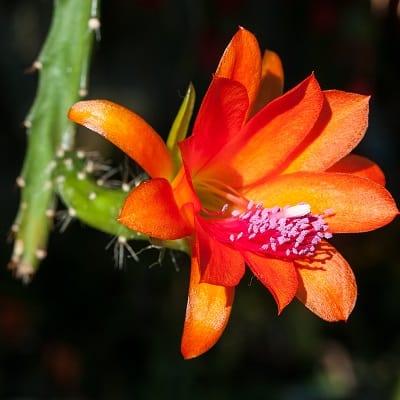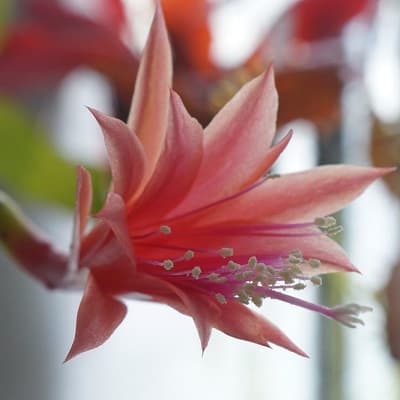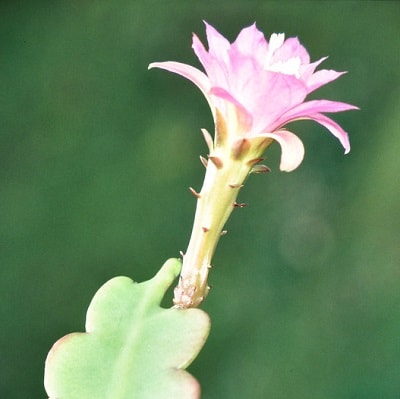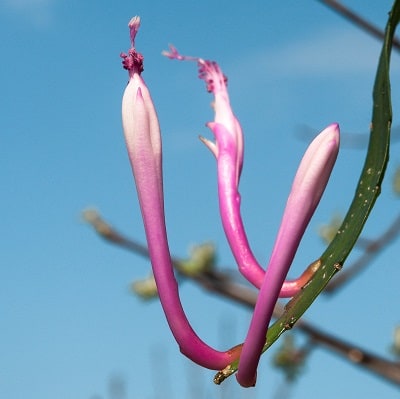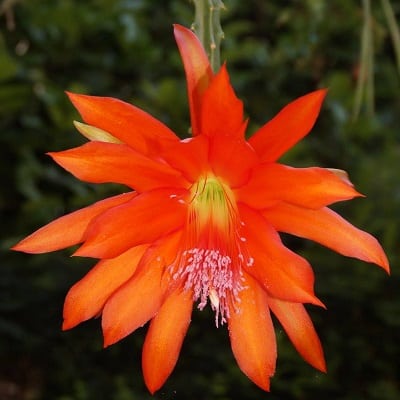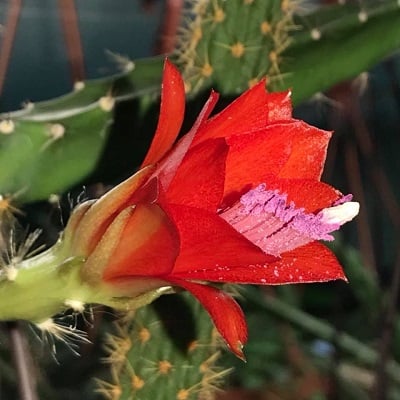16 Types of Disocactus Cacti [With Pictures]
Disocactus is a genus of cacti commonly found in areas with tropical weather conditions. These cacti can have two types of stems—they either have round stems or they have stems that are round at the base but flat at the edges.
Like most cacti, Disocactus are easy to care for and propagate.
Contents
Types of Disocactus
Disocactus ackermannii Disocactus anguliger Disocactus aurantiacus Disocactus biformis Disocactus cinnabarinus Disocactus crenatus Disocactus crenatus subsp. kimnachii Disocactus eichlamii Disocactus flagelliformis Disocactus macdougallii Disocactus macranthus Disocactus nelsonii Disocactus phyllanthoides Disocactus quezaltecus Disocactus speciosus Disocactus speciosus subsp. blomianus Disocactus speciosus subsp. cinnabarinus
Related Post:
1,000 Types of Cacti With Pictures
How Do You Take Care of Disocactus?
Currently, there are 16 species in the Disocactus genus. They have prickly stems and can grow beautiful flowers. They bloom in spring or summer and the color of the flowers can vary from white or yellow to pink, purple or red, depending on the exact species.
Not to be confused with Discocactus, which are short, globular cacti. Disocactus have long, prickly stems and grow flowers at least once a year.
It is not too difficult to take care of a Disocactus plant. They are low maintenance and can bloom twice a year in the right weather conditions. Let’s dig deeper into the specifics of caring for a Disocactus.
Light
Disocactus plants love sunlight. Make sure to give them a lot of exposure to sunlight, especially during the summer. Ideally, leave them outdoors in the mornings and evenings. Move them to shady areas around noon.
They do not do well in extreme temperatures, so if the weather gets extremely hot or extremely cold, it would be better to move the plant indoors.
If you live in a tropical region, it is possible to grow a Disocactus plant outdoors. However, a potted plant is always more convenient to care for.
Watering
Water abundantly during the growing period. Always flood the pot completely and make sure the soil is completely soaked. However, let the soil dry before watering again.
Like most cacti, the soak and dry method works best for Disocactus. Overwatering can seriously harm the plant, so make sure that the plant is not sitting on an excess of water.
Do not water the plant much during the dormant period. You need to encourage the plant to stay dormant during the colder months until the growing period begins.
If the temperatures are falling below 10 degrees Celsius, the Disocactus can stay dry for longer periods of time.
Soil
Drainage is very important for Disocactus plants. Pebbly or sandy soil provides great drainage and aeration for plants. Disocactus can be damaged by water retention, so porous soil provides ideal growing conditions by facilitating quick drainage.
Soil mixes with about 40%-50% organic matter is best suited for Disocactus plants. The type of pot used is also important.
Unglazed ceramic pots are permeable to water and air. This lets them aid drainage and they help in aeration too. Disocactus plants thrive in unglazed ceramic pots.
Fertilizing
Disocactus plants grow slowly. Their shallow roots absorb nutrients along with water. Thus, liquid fertilizers work best for Disocactus plants.
Use a nitrogen, phosphorus and potassium fertilizer once a month during the growing season. You can also use regular cactus fertilizer to aid flowering.
Do not use fertilizer during the dormant season. August or September is usually the last month for fertilizing. Once the dormant seasons ends and spring begins, you can start adding fertilizer to the soil again.
Pests and Diseases
Disocactus is not susceptible to any serious pests or diseases. Mealybugs might appear on your Disocactus once in a while, but can be gotten rid of easily with an insecticide.
Make sure to isolate the plant as soon as you see signs of mealybugs like white fluff on the branches, discoloration or fallen needles. Always clear fallen flowers or other organic matter, as they attract a lot of pests while decomposing.
It is rare, but your Disocactus may become with spider mites if left moist, especially during the summer. Insecticides are effective on spider mites too.
Like most cacti, Disocactus is vulnerable to root rot. The key to preventing root or stem rot is to make sure the drainage is fast and the soil does not retain water.
How to Propagate Disocactus
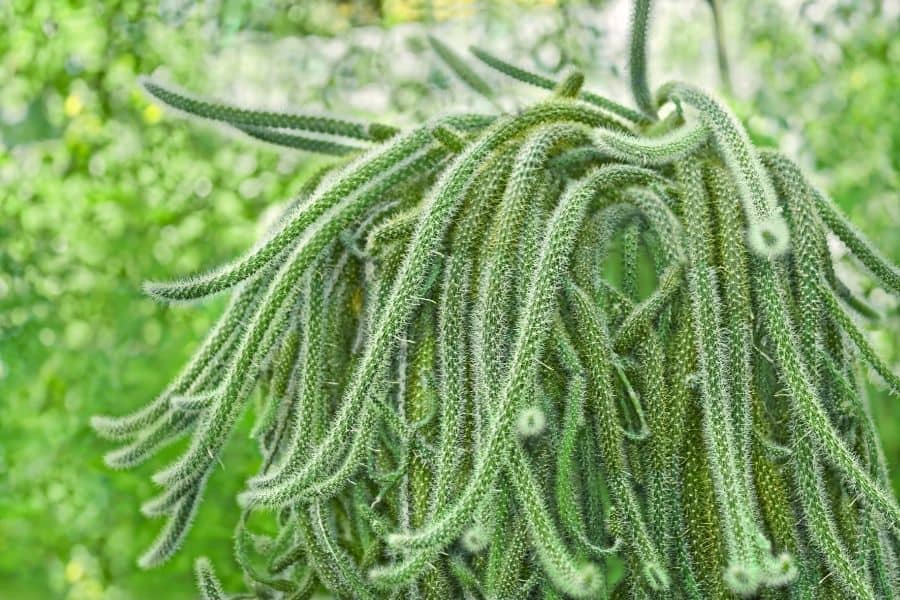
You can use both seeds and cuttings to propagate Disocactus. If you are planting seeds, make sure to plant them in a good soil mix and place the pot in a partly shaded area.
If you are using cutting to propagate your Disocactus, cut offshoots or stems with a pair of clean pruning shears or scissors. The cuttings must be at least an inch long.
Let the cuttings dry for a couple of weeks. The stem should have formed calluses at the site of cutting.
Plant the cuttings in the soil. Start watering them after a couple of weeks. They should start taking root soon. Transfer the propagated saplings to a suitable pot once they’re ready.
The temperature should be at a minimum of 22 degrees Celsius. From the time of cutting, your propagated Disocactus plants will be ready for repotting in 6 to 12 weeks.
Disocactus Species and Varieties
Disocactus ackermannii
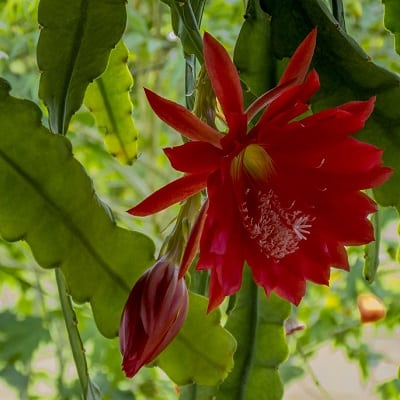
Disocactus ackermannii (Red Orchid Cactus) is an attractive epiphytic cactus with a short cylindrical main stem and longer leaf-like portions with wavy edges. The main stem is up to 7 inches (17.5 cm) long. Flattened portions are green or reddish, erect at first becoming pendant, up to 30 inches (75 cm) long, and up to 3 inches (7.5 cm) wide. Flowers are funnel-shaped, crimson to scarlet, and have greenish throats. They are up to 5.6 inches (14 cm) in diameter.
Disocactus anguliger
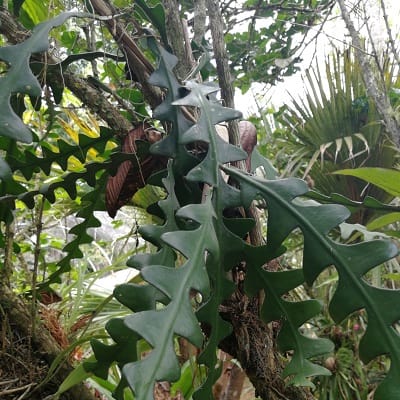
Disocactus anguliger is commonly known by the names Fishbone Cactus or Zig Zag Cactus after its characteristic fishbone-shaped, zig-zagging foliage. It forms long woody stems with succulent, flattened, smooth and green leaves measuring between 3-5cm wide. The leaves are deeply lobed leaves and can reach 20-30cm in length. Lobes are rounded to rectangular and this species produces 6-20cm long, yellow or white, nocturnal and sweetly scented blooms.
Disocactus biformis
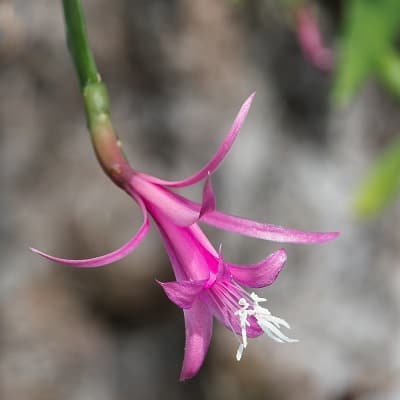
Disocactus biformis is native to Guatemala and Honduras and produces light purple funnel-shaped flowers in May. The perennials produce berries.
Disocactus crenatus
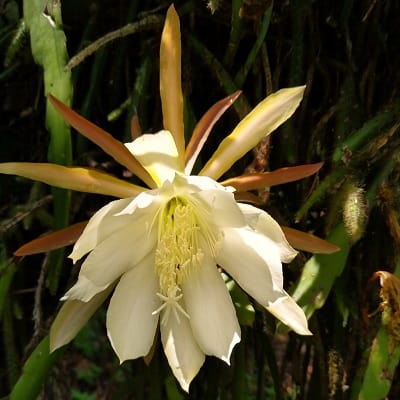
Disocactus crenatus is a very popular and well-known species with robust stems, leaf-like in appearance and margins notched or scalloped. The outsize white, very fragrant flowers opening at night are exceptional in its genus for the longer duration of blooming the following days. It is free flowering and beautiful. Its stems are 6-10 cm wide and with oblique lobes.
Disocactus crenatus subsp. kimnachii
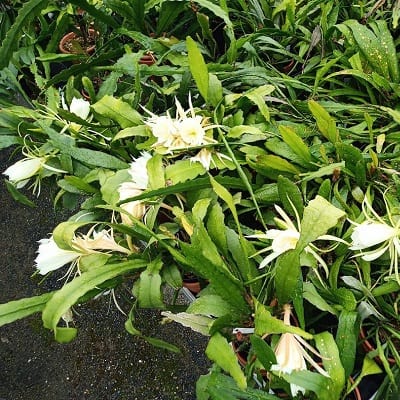
Disocactus crenatus subsp. kimnachii has stems only 4-6 cm wide and semicircular lobes.
Disocactus flagelliformis
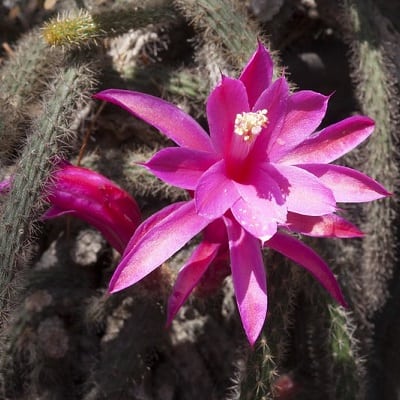
Disocactus flagelliformis (Rat’s Tail Cactus) is a slender, much-branched at the base, creeping or epiphytic cactus cultivated as a houseplant for nearly 300 years. It is one of the most popular cacti for its ubiquity in modern collections and home use. The Rat Tail Cactus is also very free-flowering, and its long, slender stems bear multitudes of crimson-pink blooms and make a good hanging plant. A larger specimen can be quite impressive, tumbling out of a pot, suggesting a waterfall.
Disocactus macranthus
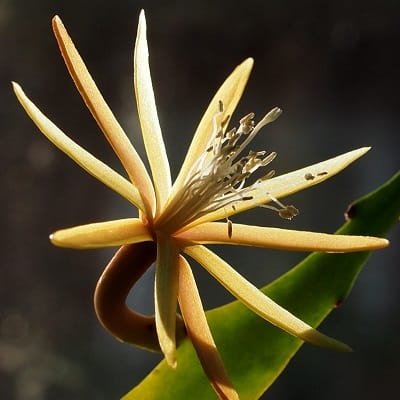
Disocactus macranthus is the most popular flowering cactus that grows richly branched with arched shoots, which are flattened at the base, twisting and turning and tapering to the tip like a leaf. The leaves are light green and notched on the edges. The areoles are small and thornless. It produces numerous small yellow-white flowers, very fragrant and profuse, tiny flat basket growth in very small 4-8 inches segments, some longer but most segments are small. The flowers are followed by red fruits that are 0.7 to 0.8 inches long.
Disocactus nelsonii
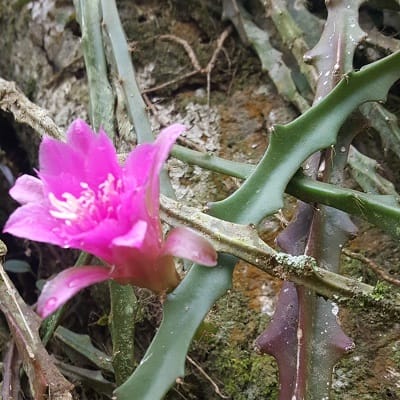
Disocactus nelsonii is an epiphytic cactus with green or reddish stems, much-branched and erect at first, then later hanging. The primary stems are up to 5 feet (1.5 m) long. The secondary stems are flat to triangular, acute with coarsely scalloped margins, toothed, and up to 6 inches (15 cm) long. The flowers are funnel-shaped, purplish-pink, or red and up to 3 inches (7.5 cm) long.
Disocactus phyllanthoides
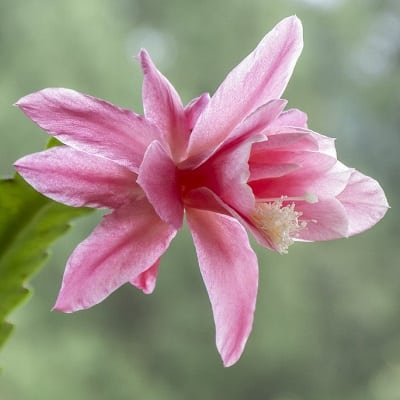
Disocactus phyllanthoides is a pendent, epiphytic, freely branching, perennial cactus up to 60 cm tall and to 1 m in the spread. The stems are flattened, toothed, glossy, green, each about 4 cm wide. The areoles on the margins each bear sweet-scented pink flowers, to 10 cm across, in spring.
Disocactus speciosus
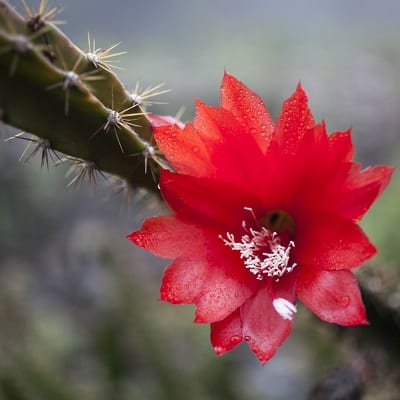
Disocactus speciosus is an occasionally epiphytic cactus with erect or pendant, much-branched stems with 3 to 5 sharp wavy ribs. The stems are reddish at first but become dark green. Flowers are up to 6 inches (15 cm) long, pink to purplish-red with a green tube with reddish scales and white hairs. Edible fruits are red, oval, and up to 2 inches (5 cm) long.

